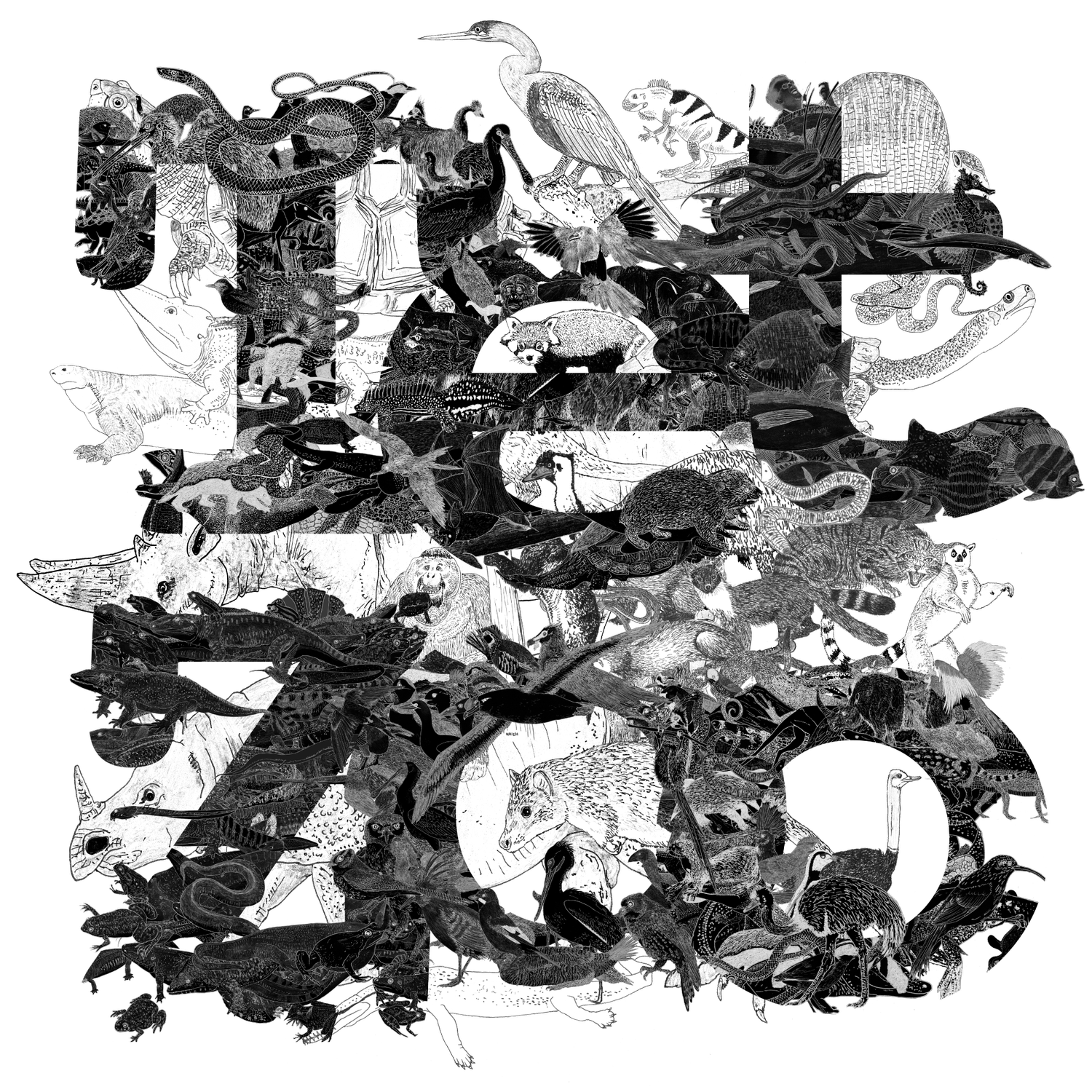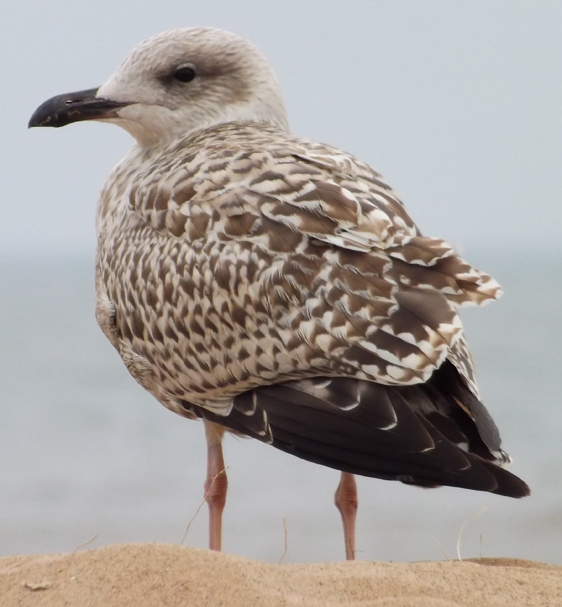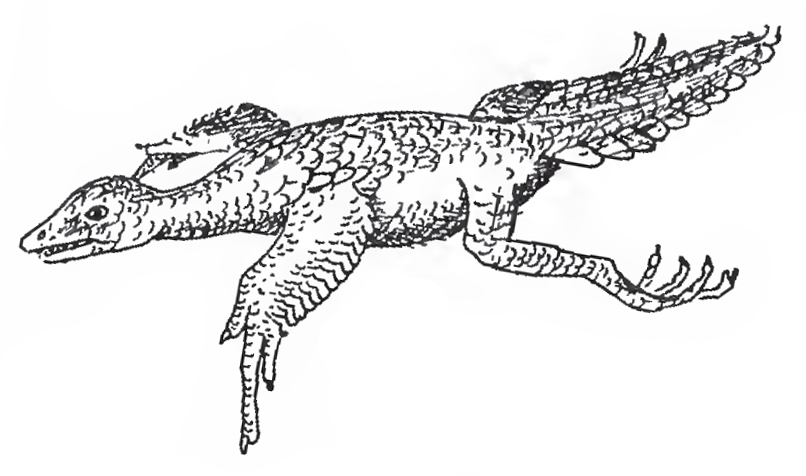Every summer, here in the UK, it’s the same. “CRAZED KILLER SEAGULL ATTACKED MY BABY”, “PSYCHO SEAGULL’S REIGN OF TERROR”, “EXPERT SAYS PUPPIES AND KIDS COULD BE NEXT”. It’s almost as if hack journalists, writing for shitty tabloids like The Mail, The Sun and The Star, have nothing smart to write about so fall back on scaremongering and the vilification of wildlife. Hack journalists are pretty good at this, stirring up waves of anti-gull feelings among a public that already dislikes any animal trying its damnedest to survive and persist in a land dominated by humans and their intolerance of wild places and other species (see #HacksVsWildlife on Twitter for a constant stream of this sort of thing).
Caption: it’s summertime in the UK, and this can only mean one thing….
Right now, the story of Gizmo the chihuahua – apparently snatched by a gull in Paignton, Devon – is doing the rounds. Gizmo is, or was, a very small dog, so the idea that he/she might have been grabbed by a big gull is not out of hand. I’m inclined to think that the event did happen, in which case Gizmo’s owners have my sympathy. Lesson for the future: don’t leave tiny dogs unguarded, outside, in an area where there are big gulls. As others have pointed out, big white-headed gulls like the Great black-backed Larus marinus can swallow prey the size of juvenile rabbits, and a big gull can likely fly while carrying an object about similar in size to a very small chihuahua (cf Young 1987).
Caption: alas, poor Gizmo. Screengrabs of headlines from some of the UK’s most noble gutter rags.
As cynical as it sounds though, this strikes me as an example of bad pet management more than a case of ‘out of control’ wildlife. I have a pet lizard and guinea-pig who are often taken outside in an area where there are gulls and corvids of several species, and I simply wouldn’t leave them alone and unguarded. What about those parts of the world where there are such things as coyotes, bobcats, eagles and other opportunistic predators? Who is to ‘blame’ when, say, a pet cat is taken by a coyote? Is it really because the coyote is in the ‘wrong’ place?
Caption: white-headed gulls (those gull species remaining in the genus Larus) are good-looking birds, in cases with wingspans that exceed 1.3 m. This is a Herring gull (photographed in Cornwall, England) with an unusually shaped head. Image: Darren Naish.
Are gulls big, formidable and potentially dangerous to small animals and even people? Yes, of course they are. They’re predatory and opportunistic, and often territorial and liable to be aggressive when guarding their nests and chicks. But the idea – promoted continually by hack journalists – that there’s some kind of GULL PLAGUE that we should rid ourselves of is just wrong, and bad.
Caption: Herring gulls consume leftovers at a restaurant in Tintagel, Cornwall. Image: Darren Naish.
Gulls Are In Decline. First of all, let’s look at the idea that these birds are super-abundant, as hack journalists and gull-haters would like you to think. As has now been pointed out many times (here at TetZoo and elsewhere), the species concerned are not just in decline, they’ve declined so much within recent decades that they’re now a cause for conservation concern. In the UK, the Herring gull L. argentatus – the species that hacks and haters mostly focus on – is a Red List species, its population now being at its lowest since recording began in 1969/70, and having declined by about 50% since the early 1990s (Madden et al. 2010, Joint Nature Conservation Committee 2014). The next most familiar species – the Lesser black-backed gull L. fuscus – has undergone a worrying population crash during this century. Similar trends are present in white-headed gulls elsewhere; the North American Herring/Smithsonian gull L. smithsonianus has declined by almost 80% since the 1960s.
Caption: a fine Lesser black-backed gull at a train station. Note the yellow legs, the small extent of the white spotting on the black tips to the primaries, and fairly dark mantle. Image: Darren Naish.
In view of this, it seems wrong to call for these birds to be sterilised (as some politicians have, apparently seriously, suggested), or for them to be lethally controlled or extirpated entirely. I may well be speaking from a position of privilege (I undoubtedly am, in fact, given that I live in a land where there are no big dangerous animals at all), but I want to live in a world where we’re alongside other species, not hell-bent on crushing them under heel into extinction. Urban gulls are an occasional menace for sure, but these aren’t animals that we should vilify or try to expunge. They need help; we should promote tolerance, not destruction.
Caption: a Bristolian Herring gull eating a feral pigeon, again at a train station. Did the gull kill the pigeon, or was the pigeon a victim of a train collision? I don’t know, but either is possible. Image: Darren Naish.
I should also add that urban gulls are important ecosystem service providers, eating waste, carrion and undesirable material (I won’t start listing it, but – oh, ok – it includes vomit and dog scat) left in the built environment by human action. They’re also important seed dispersers, playing this role in areas where other fruit-eating birds (yes, gulls eat fruit) are rare or absent (Iason et al. 1986, Magnusson & Magnusson 2000, Sekercioglu 2006).
Caption: a large group of white-headed gulls compete for food scraps in Lisbon, Portugal. Image: Darren Naish.
Why are people fixated on the idea that we have a ‘gull plague’, or that there are somehow ‘too many’ gulls? I think that a few factors may be at play. One is that gulls are both big and comparatively long-lived, meaning both that they’re way more obvious than small birds, most of which are ignored by the majority of people, and also seen repeatedly in the same areas. A single gull, hanging out on the same area of railway platform or beach promenade for perhaps more than 30 years (a Herring gull ringed in 1965 was still alive in 1997, and older individuals are now on record too), creates the impression of abundance.
There’s A Human Problem, Not A ‘Gull Problem’. Why are gulls so ubiquitous and – to hark back to the hack journalist take – problematic and pestilent? Is it because they’ve devised a clever plan to usurp humans and kill us all by pecking at the face? No, it’s because we’ve created ideal places for them to live, forage and breed thanks to our epic production of useable and edible waste, and our production of (mostly) predator-free, friendly places ideal for resting, feeding and breeding. We’ve also made life harder for them at coasts and seas thanks to development, pollution and industrial fishing. In short, the urban gull ‘problem’ is a direct product of the human problem.
Caption: there’s some degree of uncertainty as goes how reliable urban Herring gull counts are, but the overall trend over recent decades is certainly one of overall population decline. This graph is from the Joint Nature Conservation Committee Herring gull page. The dotted lines show 95% confidence limits. Image: JNCC (original here).
At the risk of repeating myself… yes, big gulls can be less than ideal neighbours. Yes, they’ll steal your chips or sandwiches if you’re unwise enough to hold those things aloft and be unaware of big animals watching you from nearby. Yes, they’ll potentially swoop at you or whack or bite you if you go close to their nests or chicks. Yes, they may even – very, very rarely – do such things as see small dogs and other pets as prey items. Yes, they shit. And, yes, they can be noisy and do their raucous calling at inconvenient times of the day or night.
Caption: white-headed gulls are slow to mature and have different plumage phases depending on age. It’s therefore typical to see birds of several different year stages at any one place where gulls hang out. This 1st winter Herring gull was photographed at Orton, Devon. Image: Darren Naish.
But I seriously question the idea that these often magnificent, slow-growing, long-lived and behaviourally fascinating birds are anything like the ‘problem’ that hack journalists would have us believe. I want to live in a world where there are other animals besides more humans and our domesticates, and the whole idea that gulls are a ‘problem’ is, frankly, tired bullshit that we should be done with.
Gulls and other charadriiform birds have been covered a few times on TetZoo before… though here’s your usual reminder that some of these articles are now paywalled, or have had their images removed.
The godwit’s many bills, January 2007
Why the Lion Grew Its Mane, a book review, November 2008
To the Sahara in quest of dinosaurs (living and extinct), December 2008
Mysterious channels of Alca torda, January 2009
Kleptoparasitism at Westbury Manor, January 2009
Mobile phones, medals, a doll's legs, an entire army... is there anything a gull won't swallow?, December 2009
The incredible bill of the oystercatcher, July 2010
Your Awesome Neighbourhood Herring Gull (And Its Many Cousins), September 2015
Avocets in Flight and Phylogeny, October 2018
Refs - -
Iason, G.R., Duck, C. D. & Clutton-Brock, T. H. 1986. Grazing and reproductive success of red deer – the effect of local enrichment by gull colonies. Journal of Animal Ecology 55, 507-515.
Madden, B. & Newton, S. F. 2010. Herring gull (Larus argentatus). In Lloyd, C., Tasker, M. L. & Partridge, K. (eds) The Status of Seabirds in Britain and Ireland. T & AD Poyser, London, pp. 242-261.
Magnusson, B. & Magnusson, S. H. 2000. Vegetation on Surtsey, Iceland, during 1990–1998 under the influence of breeding gulls. Surtsey Research 11, 9-20.
Sekercioglu, C. H. 2006. Increasing awareness of avian ecological function. Trends in Ecology and Evolution 21, 464-471.
Young, H. G. 1987. Herring gull preying on rabbits. British Birds 80, 630.


















![William Beebe’s hypothetical tetrapteryx creature. A pre-Archaepteryx glider. You’ll note that Beebe was a pretty good artist [UPDATE: this is an error. The illustrations in this publication were by Dwight Franklin, not by Beebe!]. Image: Beebe (191…](https://images.squarespace-cdn.com/content/v1/510be2c1e4b0b9ef3923f158/1546356482204-OC8JSKSSMTH2YL41VQNL/Heilmann-Proavian-Beebe-Tetrapteryx-Jan-2019-Tetrapod-Zoology.jpg)







